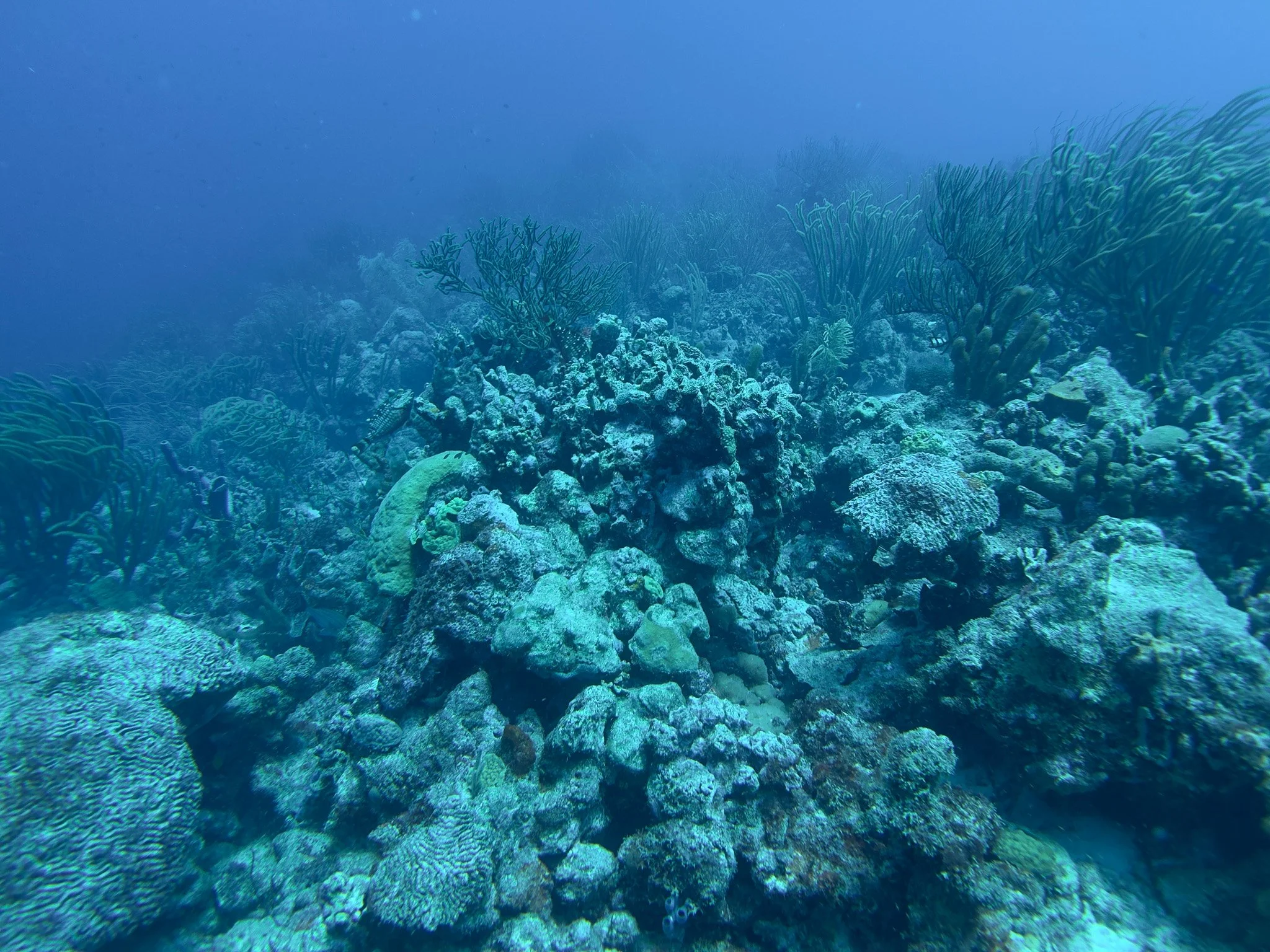In my research for the See-the-Sea website, I reported on Bonaire’s resilience and its importance as a model MPA. I knew Bonaire faced a crisis from the Stony Coral Tissue Loss Disease but didn’t realize how widespread the damage was. We saw this firsthand during our checkout dive at Buddy Dive Resort’s house reef, chosen for its accessibility and my interest in the Staghorn Horn restoration project.
As we dove on the shallow sand flats at 15 to 20 feet, I was amazed at how much the staghorn reef has expanded thanks to the Reef Renewal’s out-planting program. It had easily tripled in size since my last trip in 2022. Additionally, they had added several new coral propagation structures hosting multiple species of stony coral. I also noticed a greater amount of algae growing on everything.
The extent of the damage to the reef became clear as we descended along the fringe reef system and observed that 70-80% of the boulder and mound corals had died. This primarily affected the brain and star corals. We explored depths ranging from 30 to 80 feet and found a consistent pattern of destruction.
During coral bleaching events, environmental stressors such as high temperature and light damage the photosynthetic machinery of zooxanthellae, causing them to produce an excess of reactive oxygen chemicals like hydrogen peroxide. These tiny 'bombs" can harm the cells of both the algae and the coral host, leading the coral to expel the zooxanthellae from its tissues. This surplus of reactive chemicals can also cause oxidative stress, which damages vital molecules such as proteins, lipids, and DNA within the coral's cells.
In 2023, STINAPA, Bonaire’s Natural Parks Foundation, issued alerts, including a map tracking the spread of SCTLD, urging divers to decontaminate their equipment after each dive, report the disease's spread to the Atlantic and Gulf Reef Assessment site, and avoid infected areas. The disease rapidly spread through Bonaire’s west-side dive sites.





